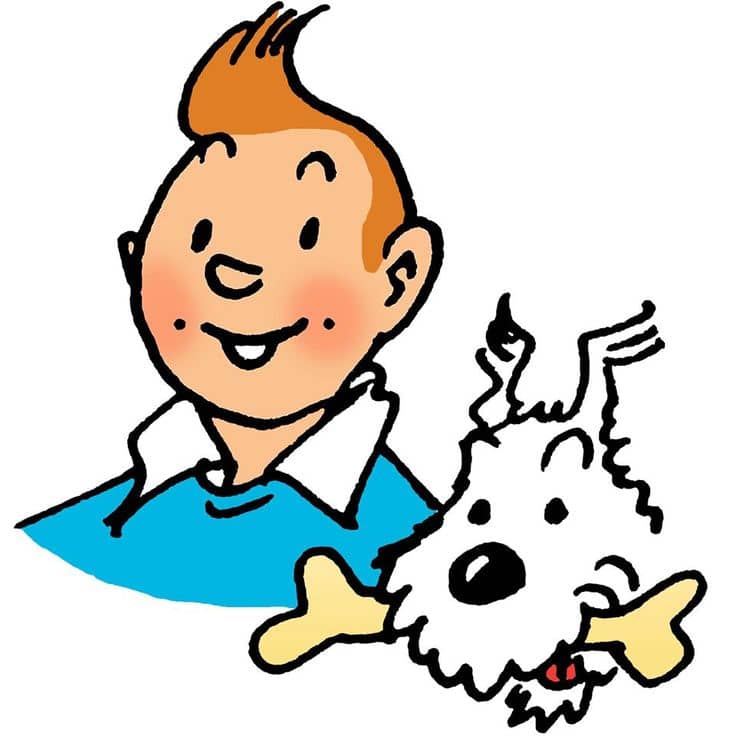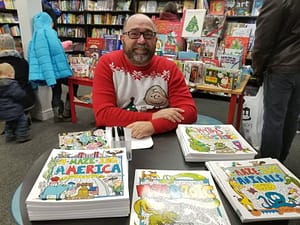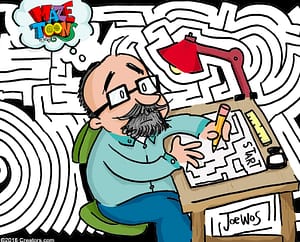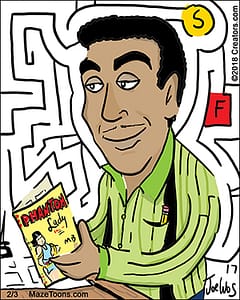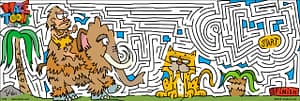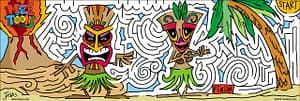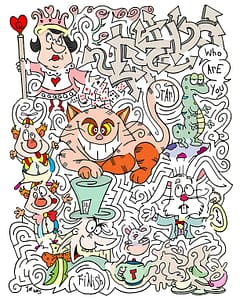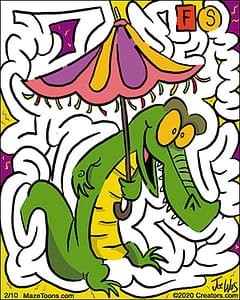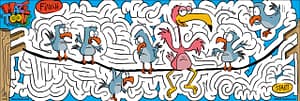Joe Wos
-I grew up in Pittsburgh, PA, USA. When I was about four years old my parents caught me drawing on a wall with a crayon. To their credit, they didn’t get mad or upset, they just taped paper up on the walls and said go ahead. I’ve been drawing ever since.
-The first character I really loved was Snoopy. Peanuts creator Charles M. Schulz was my hero. (Decades later I became the first resident cartoonist of the museum that bears his name, and have been the visiting resident cartoonist of the Charles M. Schulz Museum in California for 18 years now!) By age five I knew this was going to be my career. But I don’t think I had a specific medium or direction in mind. I loved comic strips (especially Peanuts), I also loved comic books but mostly stuff like Scrooge McDuck by Carl Barks, and animation too. I grew up in the 1970’s and Saturday mornings were a sacred time for kids to spend watching cartoons on TV. I loved all the Filmation stuff, and Hanna Barbera. So I had no direction but I had a lot of heroes working in different mediums. Sergio Aragones at Mad Magazine was another big one. In my teen years I began exploring the history of comics and developed an interest in Pogo by Walt Kelly and Krazy Kat by George Herriman. Around this time I began collecting Smurf toys, and then the animated tv show debuted, I was excited to learn about the comics by Peyo. I think one of the secrets to cartooning is to have a wide variety of styles that you emulate early on, slowly your own style will emerge and it’s really an amalgamation of all the styles you loved growing up. Eventually all those styles merge and begin to disappear into your own technique and style. We are the product of all the artists we admired who came before us and I never stop learning, my style is still changing and evolving. Interestingly one of the biggest changes to my style happened when I was teaching my kids to draw, I didn’t want to influence them so I tried to emulate their way of drawing, it ended up influencing me! I’m a big fan of my kids art, and all kids art really. There is a purity and innocence to it that sometimes gets lost in the cleanup for commercialism.
-Polishing the talent is just by drawing all the time. Get a stack of copy paper and some pens or pencils and draw. Once you find your path, the field you want to pursue, consume content! Watch or read everything you can. If you want to be a great animator, then watch great animation. If you want to be a comic book artist, read great comics. It’s okay to learn from them and even be influenced by them, but let your own style happen. Don’t make a career copying art and just selling prints of art that looks like someone else’s stuff. I can’t imagine how unrewarding that would be? To be a copy machine instead of an artist. Learn from the best but then take what you learn and create something new!
There are so many great resources to learn from, YouTube videos, classes at schools, conventions, and learning from observation. I often say the secret to being a great storyteller is being a great listener, and the secret to creating worlds is in learning how to see the world. Inspiration is all around, take it in, twist it, turn it, flip it and make it yours.
-I am best known for my performance cartooning and my cartoon illustrated mazes. For my performance work I draw stories as I tell them on stage, I also perform illustrating live with orchestras.
My maze work appears in an internationally syndicated feature called MazeToons from Creators Syndicate, and in a best-selling series of books.
It’s a unique hybrid of puzzle and cartoon. The illustrations are integrated solvable parts of the maze.
I started drawing mazes when I was about seven years old, but it took me until age 40 before I realized that it could be my viable career niche in cartooning. I consider mazes very much like storytelling, there is a start and a finish, but the adventure lies in the journey between the two.
-In the US, traditional comics have become source material more than standalone content. The end game seems to be making movies. Unfortunately it doesn’t translate into increased comics readership as much as it should. So now there are authors and illustrators who are creating comics solely for the purpose of hoping it become a movie. You can’t get into this because you are hoping to create a film, or get rich, you have to do this because you love it. Cartooning isn’t really something you do to make a living, it’s something you do to make a life. I can’t imagine a life without drawing.
Another unfortunate side to America is we tend to view us as the sole creative force in the universe, which is ludicrous of course! American miss out on so much great content from around the world! There isn’t enough material translated into American English because there isn’t enough demand. But there should be! Getting a copy of the Lucky Luke, or Asterix for me when I was a kid was like discovering a whole new world. It was a treasure! Even if I couldn’t find a translated edition, the art alone made it worth reading.
There are few successful characters from other countries that transfer to the US. For every success story like the Smurfs there are cases like Marsupalmi that never make it. Even TinTin and Asterix struggle to find an audience in the US and that is a crying shame. It would be as if there were thousands of artists who never heard of the Mona Lisa and so were never influence by the works of da Vinci. The lack of historical and contemporary international comics in the US is tragic.
-Art does two things, it reflects who we are and shows us the world as it could be. Certainly comics affect our reality by influencing it. How may astronauts reached for the stars because they read about Buck Rogers as a child? Comics influence our aspirations and in doing so encourage us to alter and improve our reality.
-I’m often asked what is your favorite piece of art you’ve created and the answer is always the same- “The one I make tomorrow.” There are works I’ve made that certainly make me proud or have had a profound impact on my career, such as creating a record setting maze, or performing with an orchestra, but I know my greatest artistic achievement is yet to come, so I keep working toward it.
-To the new generations of artists, I say: Never stop drawing. The rejection, the failures, the heartbreak, the setbacks are just hurdles placed along the way to separate the true artists from the hobbyist. Also don’t be afraid to try new tools and techniques. Your style is constantly developing and improving. Keep at it.
-I am launching an app that will feature my mazes. I also have several books I am working on right now. My Mega Maze Challenge book will becoming out from BES in 2021 and Our A-Maze-Ing National Parks will be published by Muddy Boots Books. Right now I have about five books on my board waiting to be drawn, and of course my syndicated feature MazeToons continues to grow, ask your local newspaper to carry it!
— Joe Wos Cartoonist/Author/Master Maze Maker Creator of MazeToons
www.mazetoons.com
